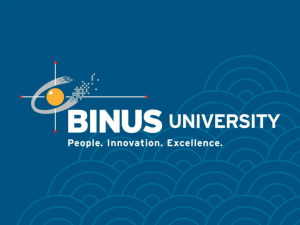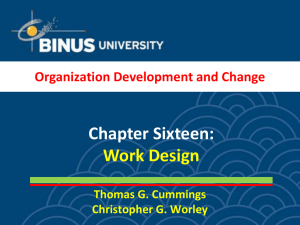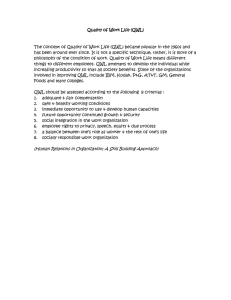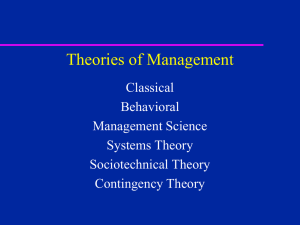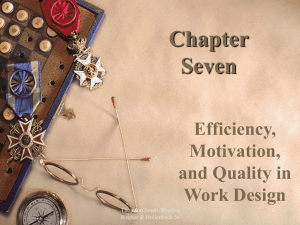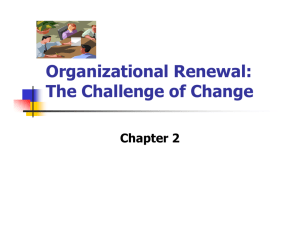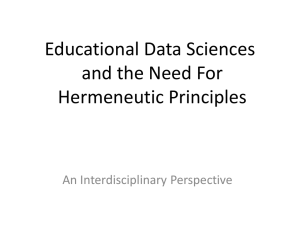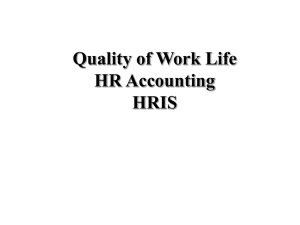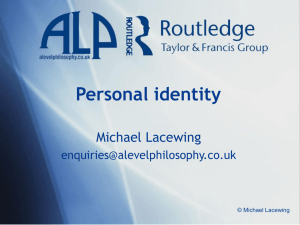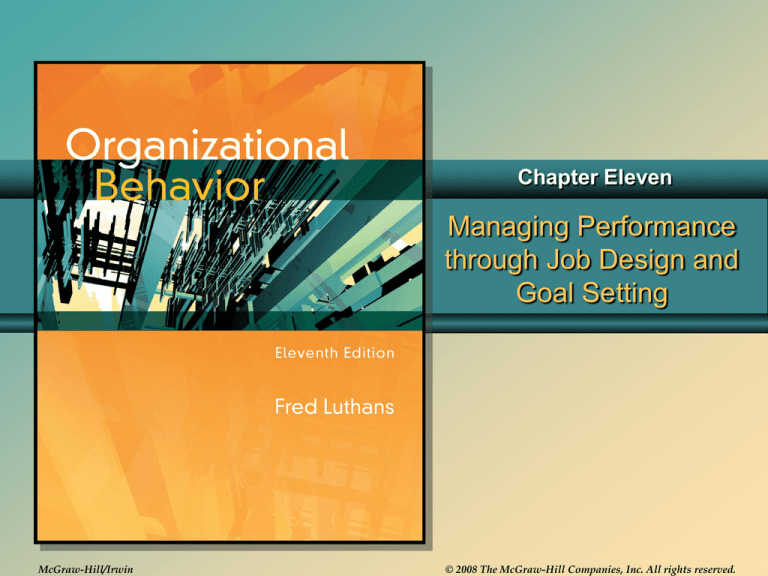
Chapter Eleven
Managing Performance
through Job Design and
Goal Setting
McGraw-Hill/Irwin
© 2008 The McGraw-Hill Companies, Inc. All rights reserved.
Learning Objectives
• Discuss the background of job design as an
approach to managing for high performance.
• Define the job enrichment and job
characteristics approaches to job design.
• Present the quality of work life (QWL),
sociotechnical, and high-performance work
practices (HPWPs) approaches to job design.
• Explain goal-setting theory and guidelines
from research.
• Describe the application of goal setting to
overall systems performance.
Introduction
• Meta-analytic research findings support
conventional wisdom:
– Good old work experience is related to job
performance
• Research and practice perspective:
– Certain job designs and goal setting can
enhance performance
Job Design
• Various approaches
Job Design
Continued
• Background on job design
– Job rotation
– Job enlargement
– New challenges
• Job enrichment
Job Design
Continued
• Job characteristics approach to task
design - Hackman-Oldham model of work
motivation
Job Design
Continued
• Diagnosing and measuring task scope
– Motivational potential score (MPS)
Job Design
Continued
• Practical guidelines for redesigning jobs
Job Design
Continued
• Engagement, disengagement, and social
information processing
– Three psychological conditions: engagement
• Perceived meaningfulness, safety, and availability
– Psychological disengagement: “going through the
motions” while at work
– Social information processing – causes of attitudes,
perceptions, and behaviors:
• Cognitive perceptions of the real task environment
• Past actions, reinforcements received, and learning
experiences
• The information provided in the immediate social context
Quality of Work Life, Sociotechnical
Design and HPWPs
• Quality of work life (QWL)
• Sociotechnical design
• High-performance work practices
(HPWPs)
Goal Setting
• Theoretical background of goal setting
– Locke’s theory
• People strive to attain goals in order to satisfy their
emotions and desires
• Goals provide a directional nature to people’s
behavior and guide their thoughts and actions
Goal Setting
Continued
– Major dimensions of goal-setting theory
Goal Setting
Continued
• Refinements of goal-setting theory
• Research on the impact of goal setting
– Importance of specific goals
– Importance of difficult and challenging goals
– Goal acceptance, participation, and
commitment
– Self-efficacy and goals
Goal Setting
Continued
• Model for relating goals to performance and
satisfaction
Goal Setting
Continued
• Research on the impact of goal setting
(continued)
– Objective and timely feedback
– Other moderators in goal setting
– A word of caution regarding goal setting
Goal Setting
Continued
• Other theoretically related and
performance management techniques
– Goal orientation
• Learning goal orientation
• Performance goal orientation
– Benchmarking
– Stretch targets
– Goal source
Goal Setting
Continued
• Application to organizational system performance
– Management-by-objective (MBO)
Goal Setting
Continued
• Impact on the psychological contract
– Goal setting – in general and managementby-objective in particular
• Create psychological contracts employees
Questions

